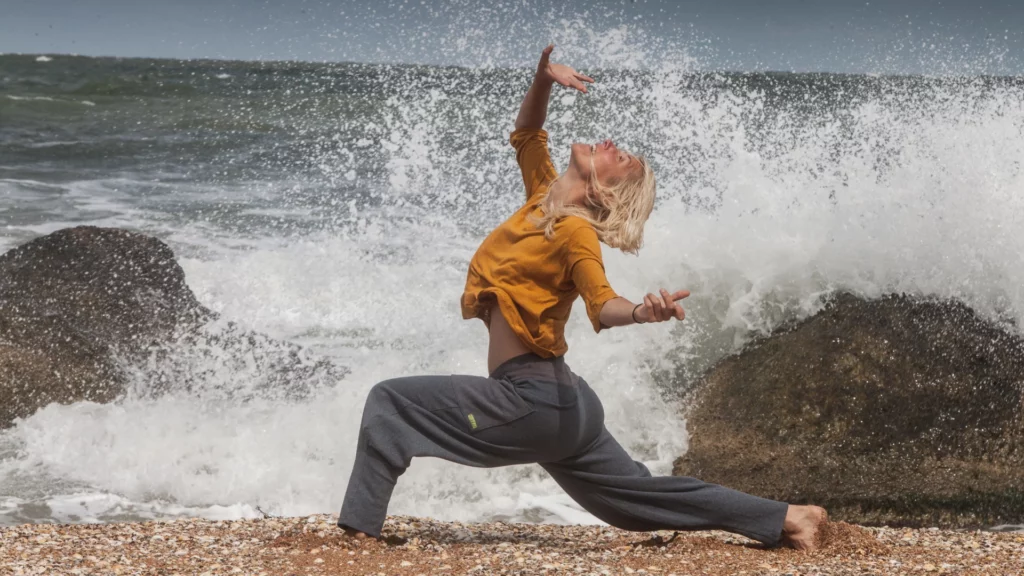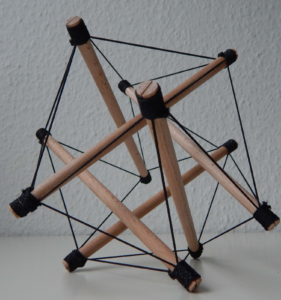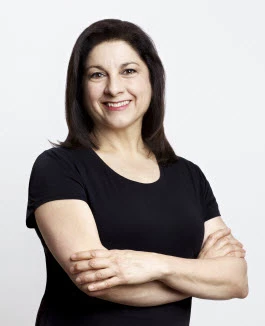The Body’s Inner Wisdom: Reclaiming Your Power with Somatic Yoga

In life, clarifying moments – sudden bursts of awareness that can change our understanding about one small thing or everything – can come in many ways.
Yoga Teacher and Somatic Educator Donna Brooks vividly remembers one such flash. In the midst of a somatic movement practice, an unfortunate truth she had been doing her best to avoid, namely that her marriage of 27 years was not working, became crystal clear. She had been doing her best to overlook the problems and carry on, but at that moment, her body said enough:
“One day, I was practicing a developmental movement pattern from my Body-Mind-Centering training. I don’t even remember which pattern I was in, but as I was doing it, I felt supported in a way I’d never felt. The funny thing is that as soon as my now ex-husband came into the room, the pattern stopped working. My body went someplace else. That was a “wow” for me. I knew I had to leave.”
Of course, not all yoga or movement practices will inspire such a dramatic transformation. But the lingering effects of our experiences, both good and bad, can imprint on us for a lifetime; they can etch a groove in our nervous system, like a bruise that never goes away.
Traditionally, psychologists have focused on talk therapy to free us from mental and emotional burdens. Increasingly, however, more and more people point out that to truly free the mind, we must work on the level of the body.
“You don’t experience physical, mental, or emotional pain solely in your thoughts,” says Donna. “The best place to minimize the impact of past experiences is in our bodies because our bodies also carry the residuals of past trauma.”
“We reclaim our intelligence by getting through all these patterns we store in our bodies, either physically, mentally, or emotionally,” she continues. “We become compressed by, constricted by, or confined by everything that we’ve experienced in life. Those become ingrained into our bodies in patterns, the source of which can be injury, trauma, or both. But it could also be cultural, like the fact we all have to sit in chairs!”
Here’s one place where movement – specifically yoga in different forms – comes in. “Asana can unfold,” Donna counsels.
“A lot of my approach to yoga through my adult life is that I can make myself work really hard and put myself into postures. Sometimes, that’s totally appropriate and can be very therapeutic. But in terms of letting the directionality of myself lead me into higher intelligence, the freer expression of somatics is there to offer possibilities.”
Experiencing Life Through The Vehicle of the Body

“When we’re embodied, it’s like we’re not living in our thoughts or our projections of the past or the future. We’re actually experiencing life here and now through this vehicle of the body. We can say that the body is permeable. It’s not solid. There’s this transparency to whatever exists that we don’t see in our ordinary mind. It’s not just about flesh and bones. The authenticity of that transparency and the fullness of our physical and emotional lives together come from experiencing life viscerally in the structure.”
Donna clarifies that there is a place for more traditional asana practice in unfolding the remnants of life’s experiences. She points to an innate intelligence in the body that responds well to principles, structures, and behaviors that we use to guide us. That said, a more intuitive somatic approach may lead to more understanding of reflexes, developmental patterns, sequential movement, and the like. In those patterns, the role played by our fascial structures comes into play. 
“In the fascia or connective tissue matrix, you get a really good sense of sequence through the body. We see how pressures and force don’t land in one place. That’s the living concept of tensegrity. It has both a linear-ness and a spiraling quality.”
Donna explains that practicing straight Iyengar yoga for many years sometimes felt like diminishing her spirit. When she added the somatic approach, her practice became much more fluid.
“That intentioned fluidity that holds a lot of positive tone. When you tune into the connective tissue matrix, you get a really good sense of sequence through the body. And if you can tap into the intelligence of that tissue and let it appear, you find amazing ways of supporting your body,” she continues.
As an example, she points to an instance where a person has a strained wrist, as evidenced by pain and inflammation in that area. By exploring the movement of the wrist, there may also be a weakness or overcompensation in the shoulders, the fingers, the ribs, or behind the shoulder blade. While the cause of pain could be physical issues – having had a broken bone in the past or getting stuck in traffic – remnants of emotional trauma or upset can also settle into the body. In either case, a kind of rigidity sets in.
How Somatic Yoga Helps Release Strain Patterns in the Body

“When a muscle fiber constricts–what they used to call tightening and now term binding – it’s not just the muscle that’s tightening, it’s also pulling on all the fascia. Once muscle binds the side that’s pulling on all that fascia, that in turn affects the tendon and the outer layer of bone.” Yoga is a way to release some of those fascial strain patterns.
“There are neuroreceptors in the fascia, some of which really respond to sustained pressure and elongation. When we talk about classic yoga – going into a position and holding it with extension – you’re communicating with very specific nerve receptors that are getting awake and tingly and alive in your fascia.”
Adding the embodiment element of yoga amplifies yoga’s potential even further.
“It’s like someone who gets an athletic high – like they’re like a marathon runner, and it’s hard, and it’s hard, and it’s hard, and then all of a sudden it’s just kind of kicks on, and they’re in glide mode. They feel so alive, and they have a transcendental experience.”

 Lynn Crimando, MA, serves as the teaching mentor for YogaUOnline’s Wellness Educator Program. She is a yoga teacher, C-IAYT Yoga Therapist, board-certified Health and Wellness Coach, Certified Personal Trainer, and Buteyko Practitioner. She has a private practice in New York City and teaches classes throughout the city on behalf of Health Advocates for Older People. In addition, Lynn is on the faculty of the IAYT-approved Yoga Therapist Training at YogaNanda in Garden City, New York. To learn more about Lynn, visit her website: yogalynn.com.
Lynn Crimando, MA, serves as the teaching mentor for YogaUOnline’s Wellness Educator Program. She is a yoga teacher, C-IAYT Yoga Therapist, board-certified Health and Wellness Coach, Certified Personal Trainer, and Buteyko Practitioner. She has a private practice in New York City and teaches classes throughout the city on behalf of Health Advocates for Older People. In addition, Lynn is on the faculty of the IAYT-approved Yoga Therapist Training at YogaNanda in Garden City, New York. To learn more about Lynn, visit her website: yogalynn.com.



